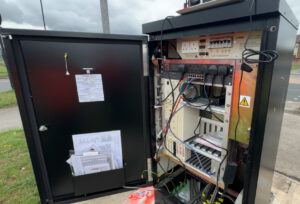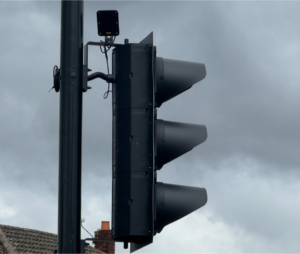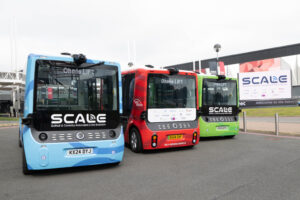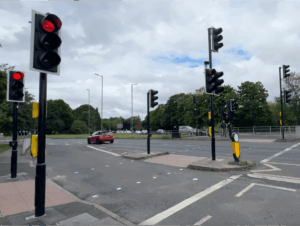Kealie Franklin, administrator of the Traffic Open Products and Specifications group TOPAS writes for Highways News:
Why do we need UK specific standards
As everyone is aware, EN standards are primarily standards for trade across European countries. They are performance standards and do not cover specific country functionalities. Many countries in Europe have a system comparable to TOPAS which sits underneath legislation and EN standards requirement to effectively manage their specific functionality requirements for roadside equipment.
To not have UK specific standards, means we could fall foul of using systems which simply do not provide for the UK needs. This is particularly relevant in the cases of retrofitting and portable/moveable equipment which are unlikely to be covered by EN standards in any event.
Why does TOPAS exist?
In 2016 the DfT published the new Traffic Signs Regulations and General Directions, superseding the 2002 version.
Alongside this, DfT published its Circular 01/2016. *The Traffic Sign Regulations and General Directions 2016 – DfT Circular (publishing.service.gov.uk)
The following extract appears in relation to the need for TOPAS
Pg 19/20 of the DfT Circular 01/2016:
‘[3.49] Under direction 56 of TSRGD 2002, traffic control equipment (eg equipment used to control traffic lights and variable message signs) could only be used having first obtained type approval from the Secretary of State [Statutory Type Approval]. Over time this mechanism failed to keep pace with developments in the industry and was in need of reform.
[ibid] Whilst recognising that some form of approval or registration process was still needed, the decision was taken to remove the statutory type approval requirement. Certain safety critical elements previously set out in technical specifications are now prescribed in TSRGD 2016, such as the amber time and safety classes for controllers by reference to the relevant BS EN Standard.
[ibid] The Traffic Technology Forum, a partnership of the Association for Road Traffic Safety and Management (ARTSM) and the Traffic Systems Group of the Association of Directors of Environment, Economy, Planning & Transport (ADEPT), has developed a voluntary alternative to type approval for traffic control equipment. Traffic Open Products & Standards Limited (sic) (TOPAS) is a new body formed to oversee the promotion, maintenance and use of technical procurement standards. The aim is to minimise procurement costs and encourage standardisation.
[ibid] The TR series of technical specifications previously managed by the Highways Agency/Highways England now become TOPAS procurement standards. Manufacturers will provide a Specification Compliance File to demonstrate compliance with the relevant technical specification, to be checked by an independent body, with an entry included on the TOPAS product register to that effect.’ [bold added for emphasis by this author]
As stated above, it had been recognised by the sector and DfT that the earlier system of Secretary of State Type Approval was unable to keep pace with developments in the industry. TOPAS, under its agreed terms of reference, is tasked with the development of new standards where these are deemed necessary by sector.
There are a number of reasons for development –
- new requirements identified under EN standards which require amendments and updates to the current portfolio of TOPAS standards;
- a removal of a technology or component which changes the functionality of a system;
- a request from the sector – supply chain, the user community or government body – to develop a standard deemed to be necessary for new technologies or services;
- New operational systems – e.g. cycle lane signals
The TOPAS process:
- ensures new technology can be developed in a standardised way;
- ensures that innovators are aware of UK legislation (including TSRGD and other Statutory Instruments such as EMC/RER);
- ensures that new products do not critically impact with other equipment already controlled in a specified manner. For example, when applying Bluetooth operation to manually operated equipment)
- ensures that the UK remains up to date with the application and use of technology on its roadside
- ensures that safety and consistency of use for all road users are paramount
How is this done?
When an approach is made to TOPAS for a new standard, a sub-committee will be formed using experts from across industry (users and supply chain) to understand the extent of the technology, what the requirements are, how these can be standardised and be interoperable.
Any draft standard created is presented for public consultation through the TOPAS website and elsewhere, prior to the standard being published through the TOPAS website. This is generally for a period of three months for the first consultation (and if necessary, further public consultations following comment).
All stakeholders and interested parties are encouraged to provide feedback and comment, particularly experts in the areas of relevance.
Removing the barriers
By undertaking this process TOPAS provides for futureproof standards to be developed as and when necessary. TOPAS also maintains a rolling annual review of those standards that already exist to take account of any areas which are no longer necessary, or which need further criteria to be included. The Board will consider any request for change to current standards, particularly as a result of new technologies that improve safety. However, TOPAS will always take account of the legacy products which prevail to ensure that the “baby isn’t thrown out with the bath water”.
Maintaining and improving safety is always a key element in the creation of standards and the need for TOPAS in this is clear. Without TOPAS changes would need to be dealt with through amendments to legislation or amendments in EN standards – neither of which are swift or guaranteed.
What TOPAS needs from you
To ensure that this can be its most effective, we need manufacturers to recognise the value of the process; we need the user community to continue to request that products are registered to TOPAS latest specifications; and we need innovators to engage with the sector to understand both the future and the current positions.
Without these actions, TOPAS will be unable to futureproof and manage the interoperability of innovative change, which is the main reason that TOPAS was created in the first place (see first paragraph above!) (DfT circular 1/16 para 3.49).
National Highways Product Acceptance Procedure
In addition to Statutory Type Approval, National Highways has always had, as part of its own procurement process, a requirement placed on a supplier to prove that their products meet the specifications and requirements by means of self-certification. Whilst the requirement for self certification is similar to that of TOPAS, this National Highways process should not be confused with either the former Statutory Type Approval or the TOPAS registration process.
They are not the same.
All highways and roads authorities have a duty to ensure that products used on their roads are fit for their purposes and needs. National Highways does this through its Product Acceptance Procedures (currently MCH1600), the outcome of which produces a Product Acceptance Certificate (PAC). This Certificate is evidence that a product has been granted acceptance and consent by National Highways according to their product technical specifications (which are in addition to any TOPAS specifications). This procedures is more commonly known as PAC.
National Highways is a member of the TOPAS Board, and we are currently working together to review standards between the two bodies that have overlap, in particular environmental testing.
National Highways have, under their TR1100, provided TOPAS registration as an accepted part of their process under the PAC, but it should be borne in mind that it is only part of the process, and National Highways may require further evidence.
With regard to acceptance for TOPAS registration, compliance under TSRGD and all other relevant UK legislation (including any EN or other standards called up within those instruments) must be met, in addition to the functionality requirements of the TOPAS specifications.
Where the overarching legislation is not met, then it is not likely that any product will be accepted by either TOPAS in its processes or, indeed, National Highways or other roads authorities under theirs.
However, this is not a barrier to innovation, it is a safety caveat which ensures that products that are used in the UK are fit for the purposes stated by law. All good innovations will seek to be protected by law in this way.
Going forward and why we must use TOPAS for the future
As stated above, The TOPAS Board is made up of industry and users – through ARTSM and ADEPT. Its third arm is government – represented by the DfT and the respective departments in each of the devolved governments of the UK – are also part of the Board. All of these bodies provide input into the development and review of standards and specifications which enables TOPAS to keep abreast of the wider picture from all perspectives of the sector we sit within.
ARTSM for its part, is a strong collaborative body which works to support innovation and change and provides a platform for extensive review of standards from the supply chain community. It gives this expertise at no cost to TOPAS. Any TOPAS formed sub-committee will accept representation from those outside the ARTSM trade association and all consultations for TOPAS standards are public. The name “TOPAS” explicitly identifies “Open” as its remit.
Innovators are welcome to approach TOPAS where they consider a need for a new standard to be created. They will need to show an application use case for a product or system, and objective reasons for the development of a standard. Where there is no current standard, then the benefits of a new standard should be stated, including areas where there are safety or incompatibility issues relating to current product functionalities. Where there is a current standard then there should be a statement providing rationale for the need for the functionality to be identified and any foreseen consequences if a standard is not developed.
There is no cost for such an application to be made, nor is there a cost for the development, other than you may also wish to be involved in the drafting processes. The process itself is much swifter than that under CEN/BSI requirements and the standards are developed specially for the UK roads requirements.
The caveat here, is that you should check that you have understood the requirements of the TOPAS process, and in particular, the need to meet all UK legislation that exists for your type of product.
Contact details for TOPAS – [email protected] Website: www.topasgroup.org.uk
(Picture – TOPAS)






















